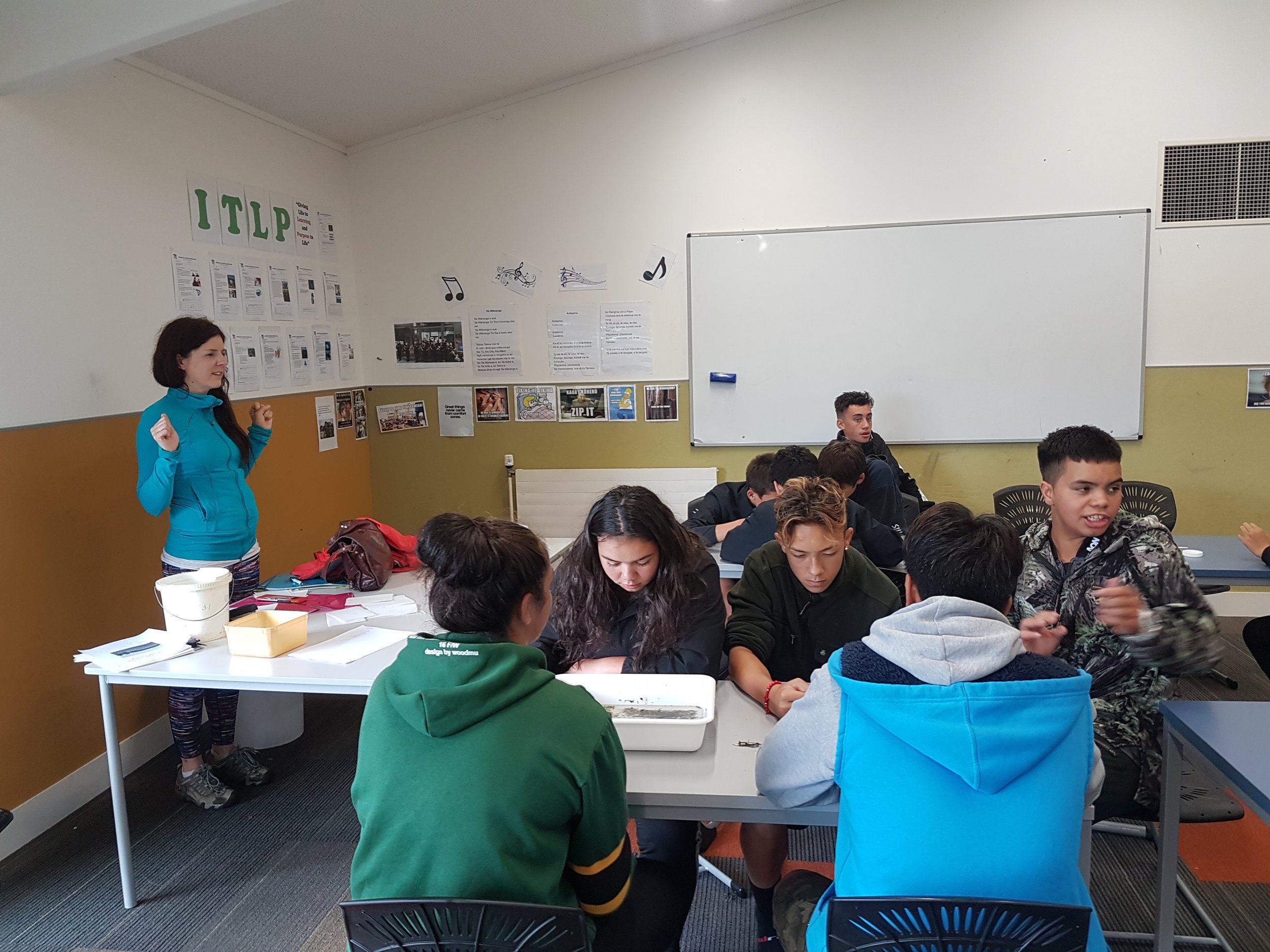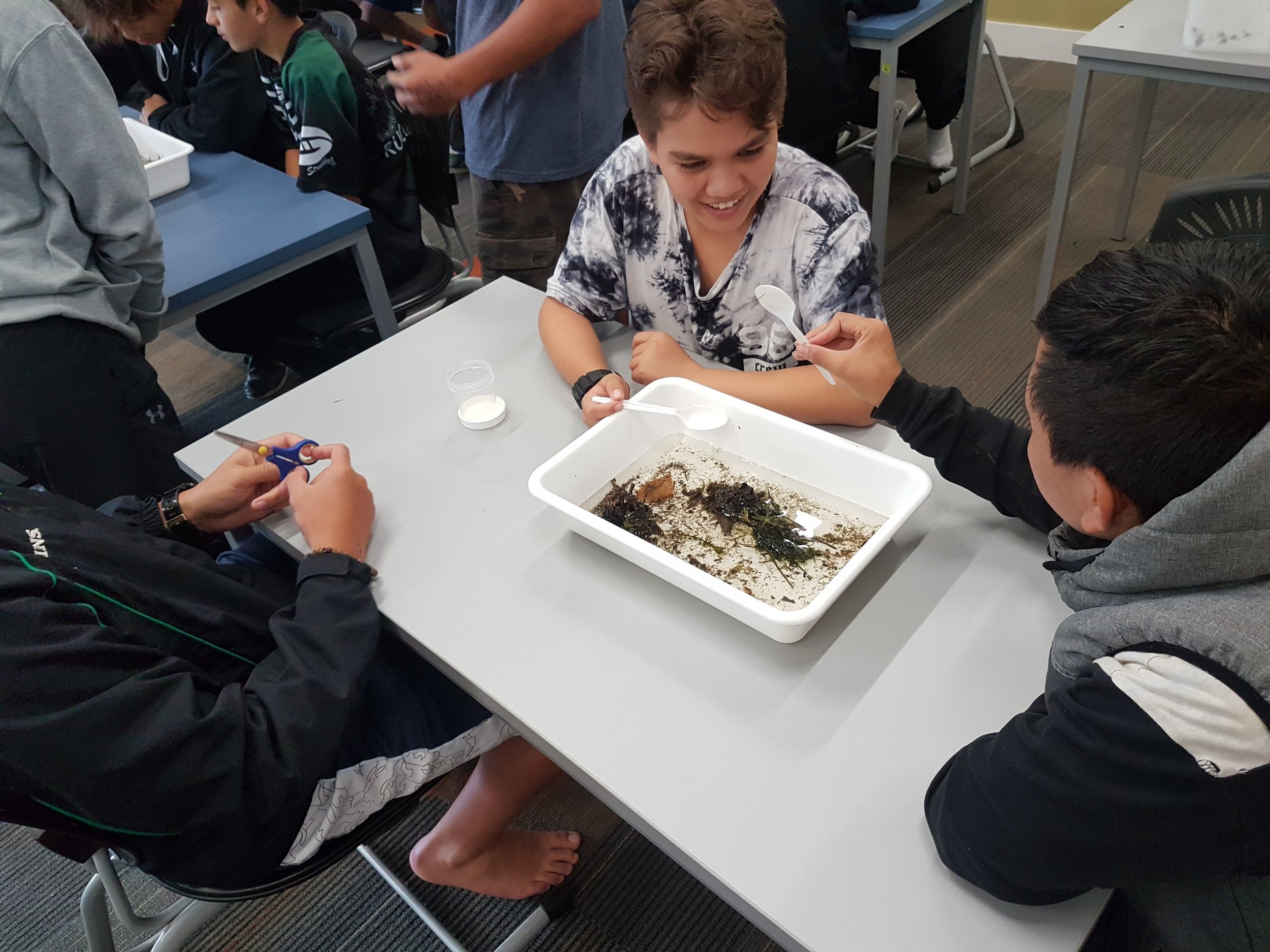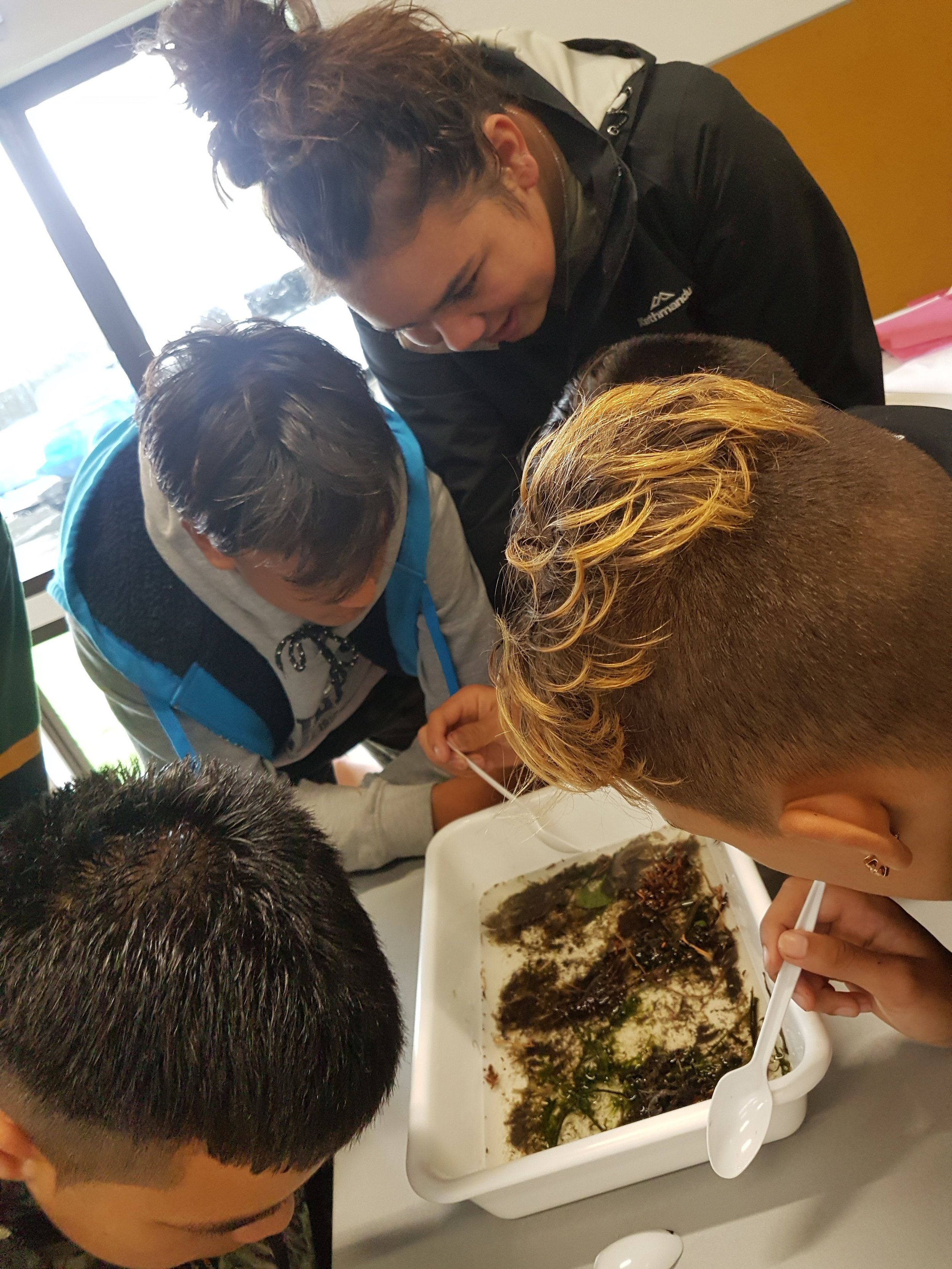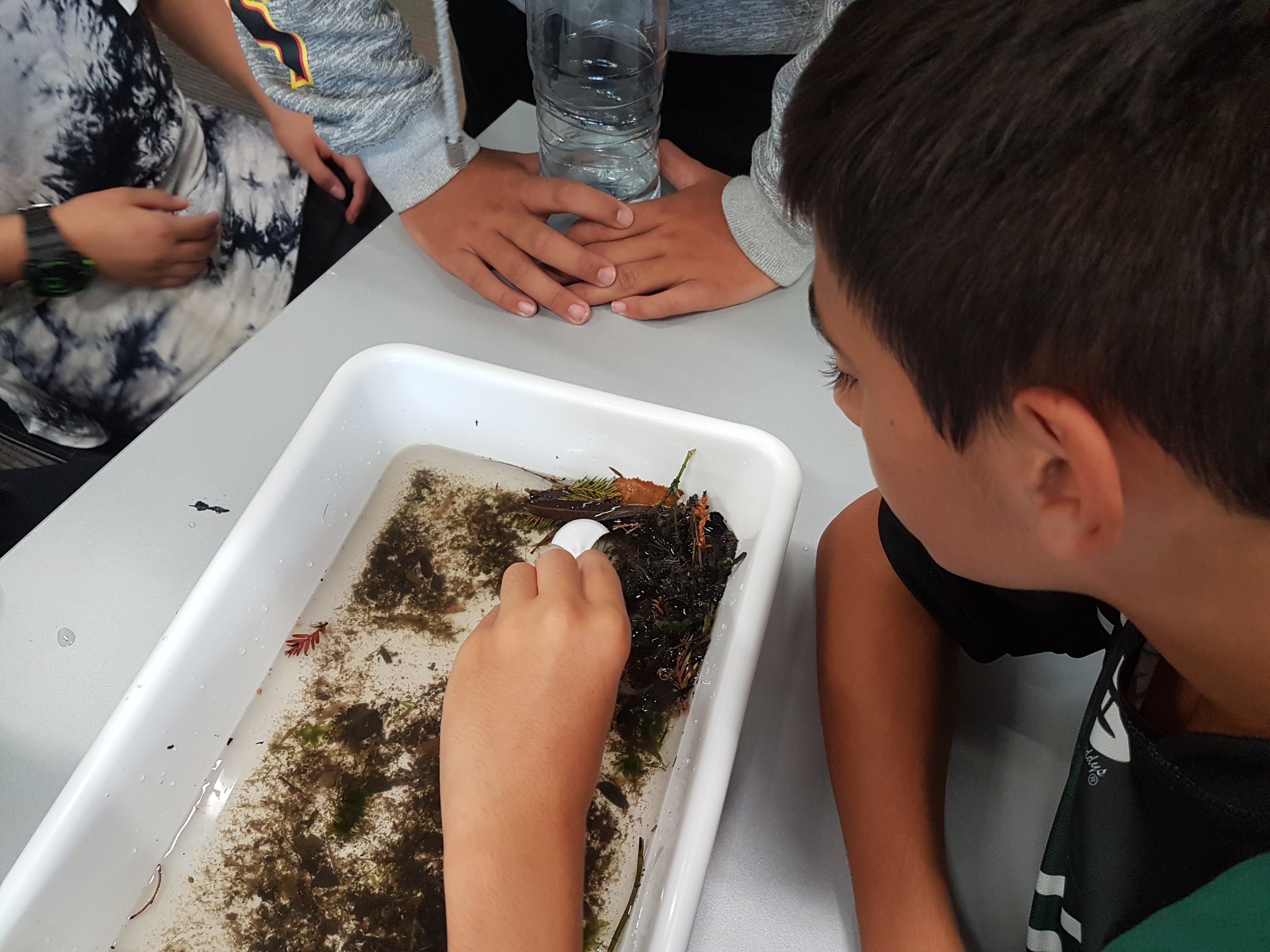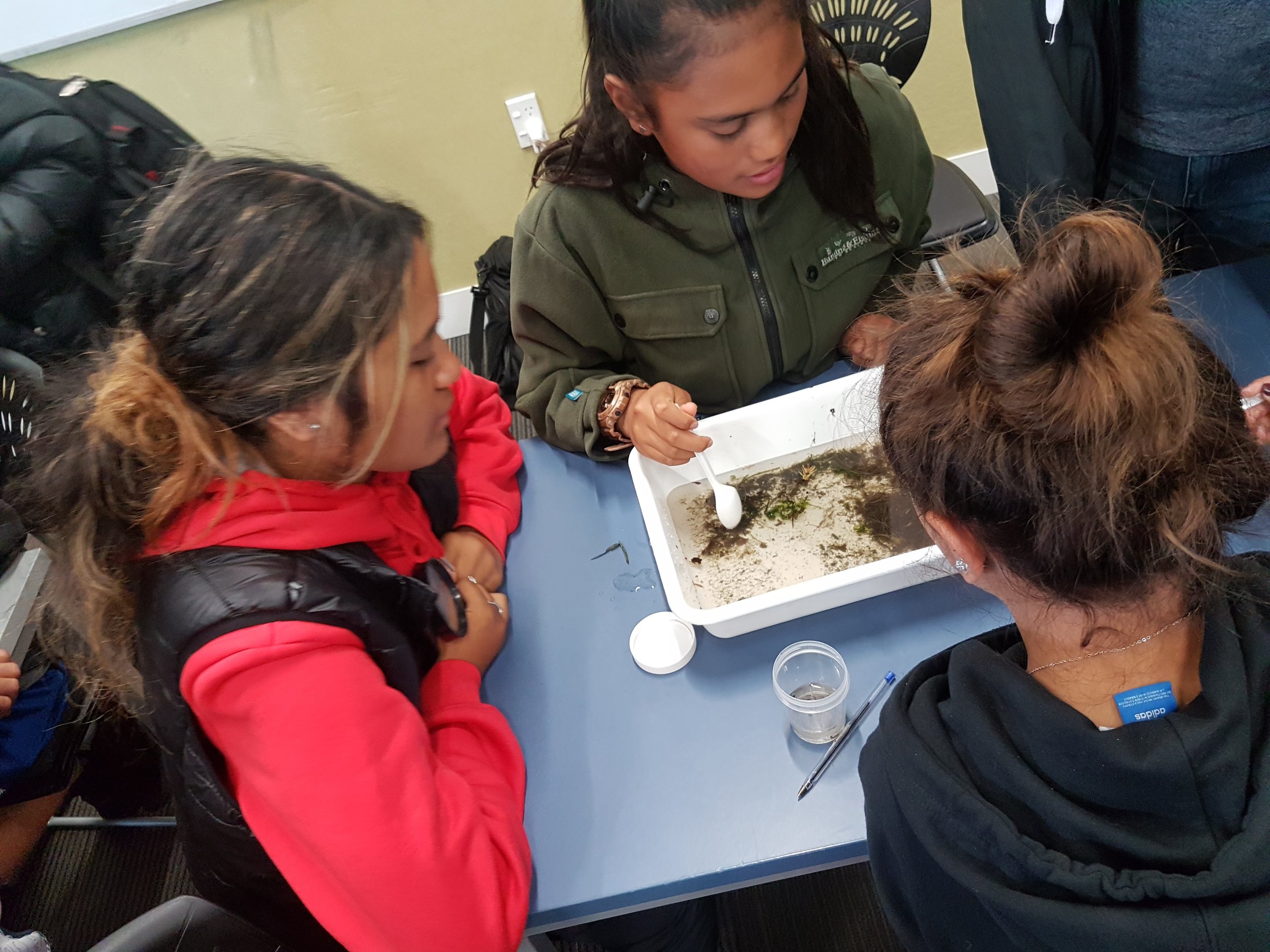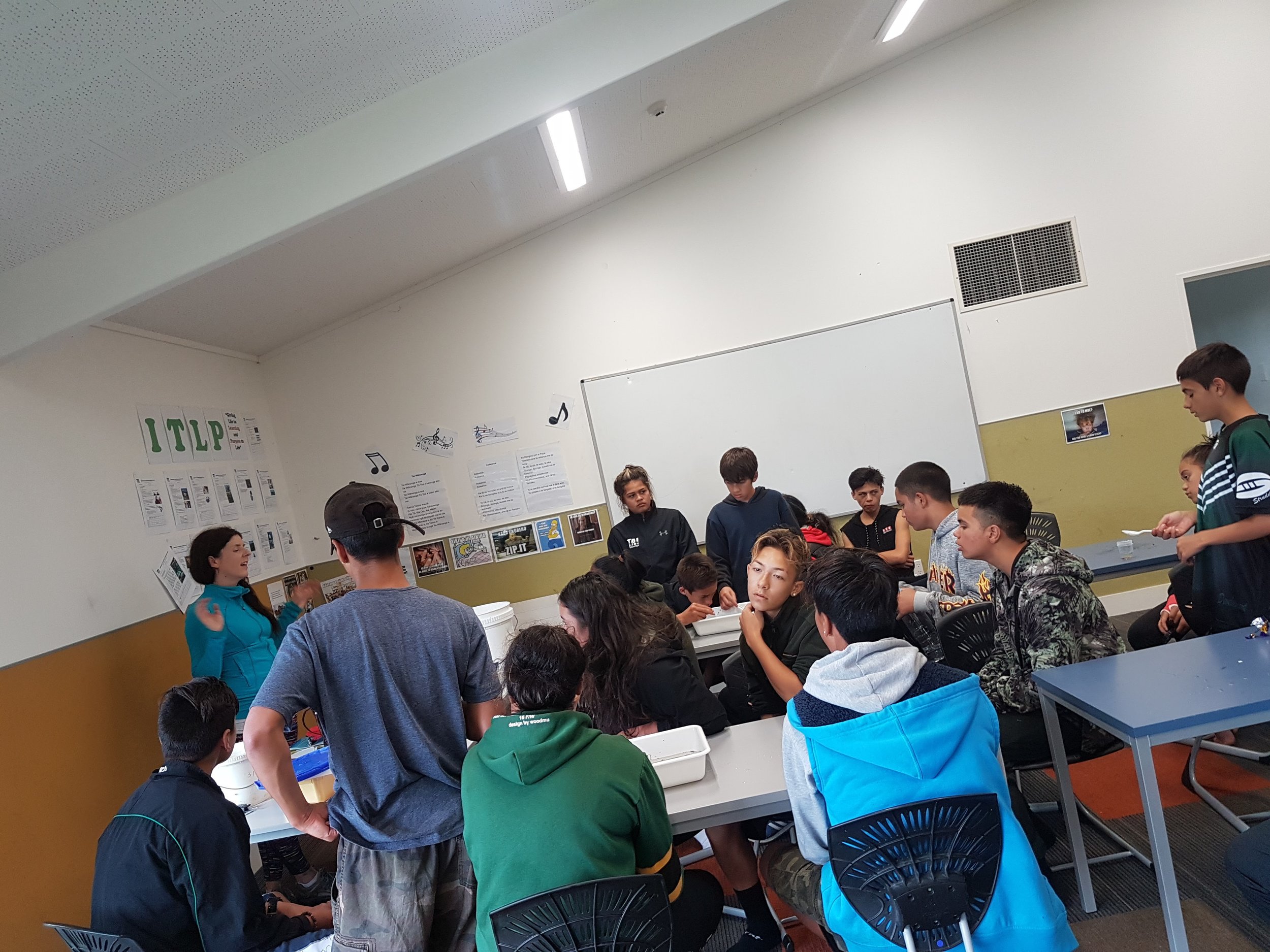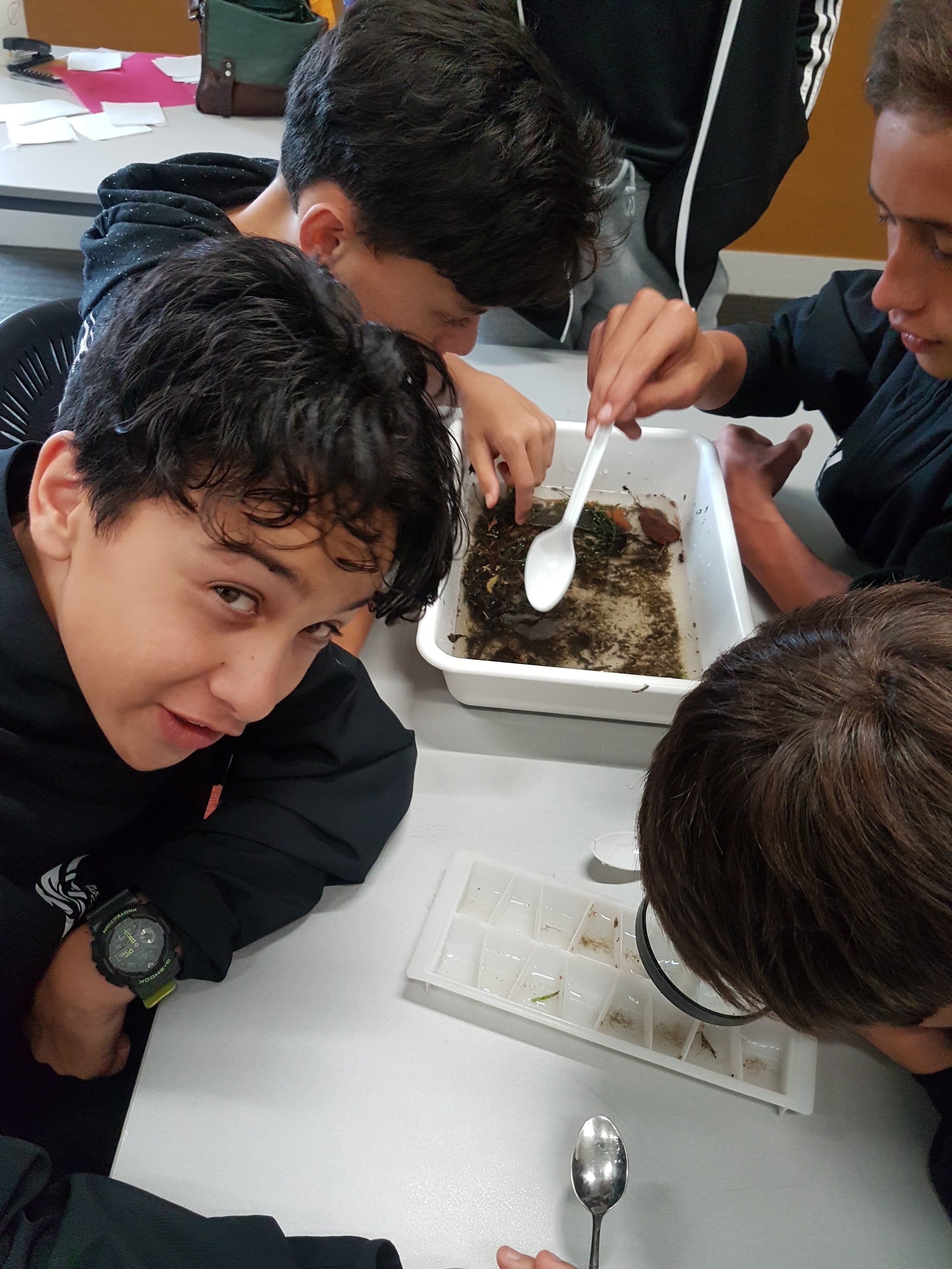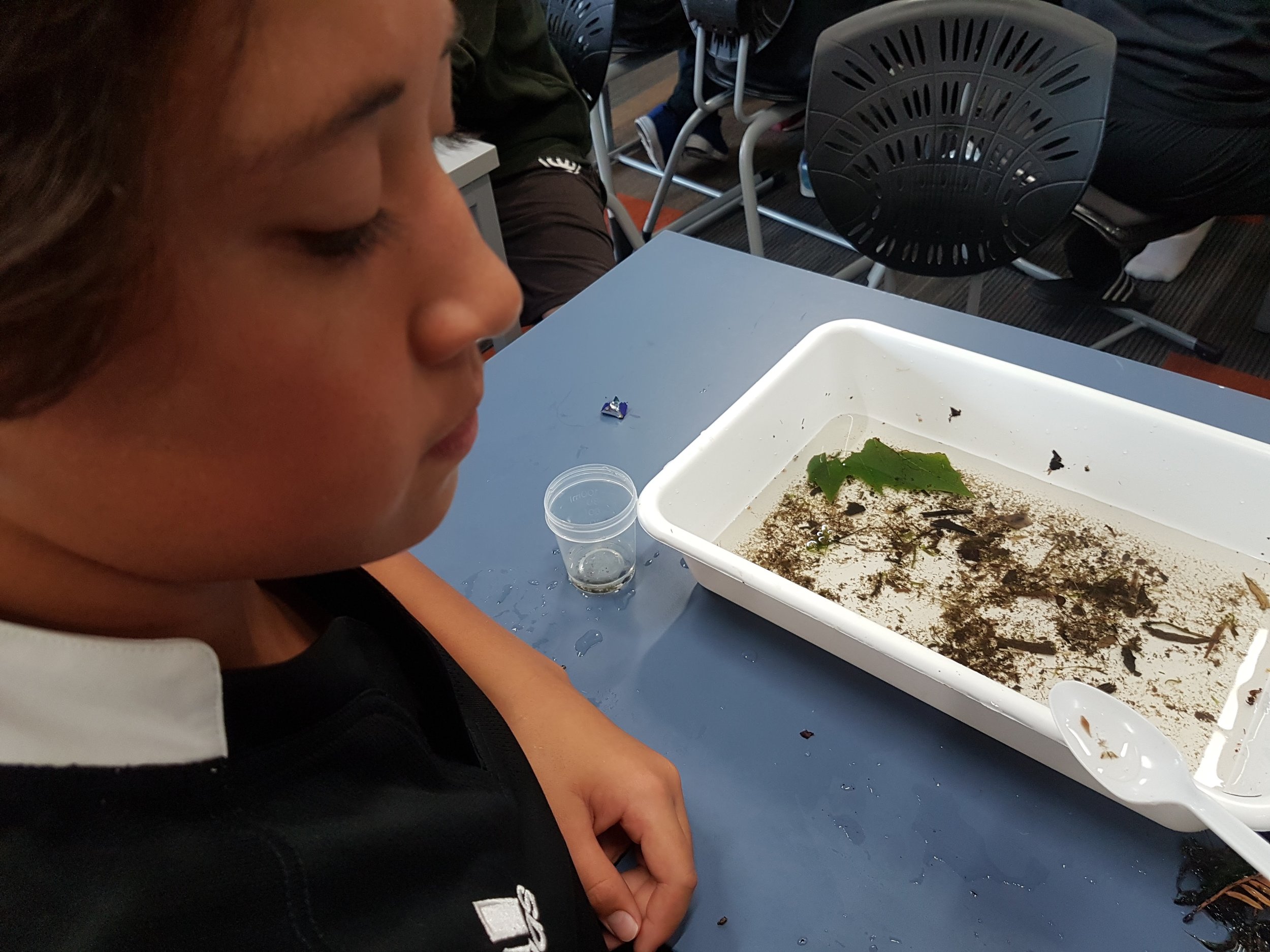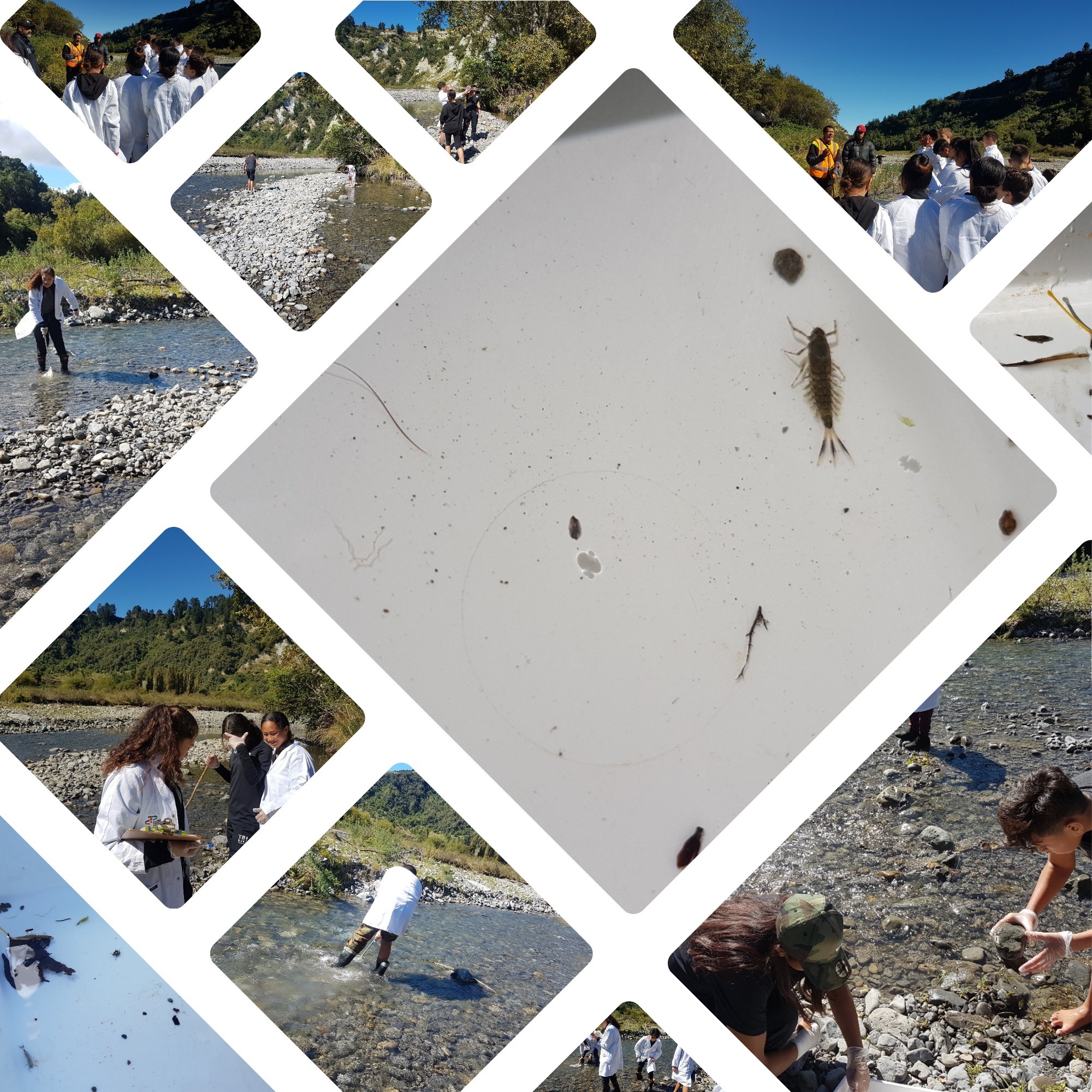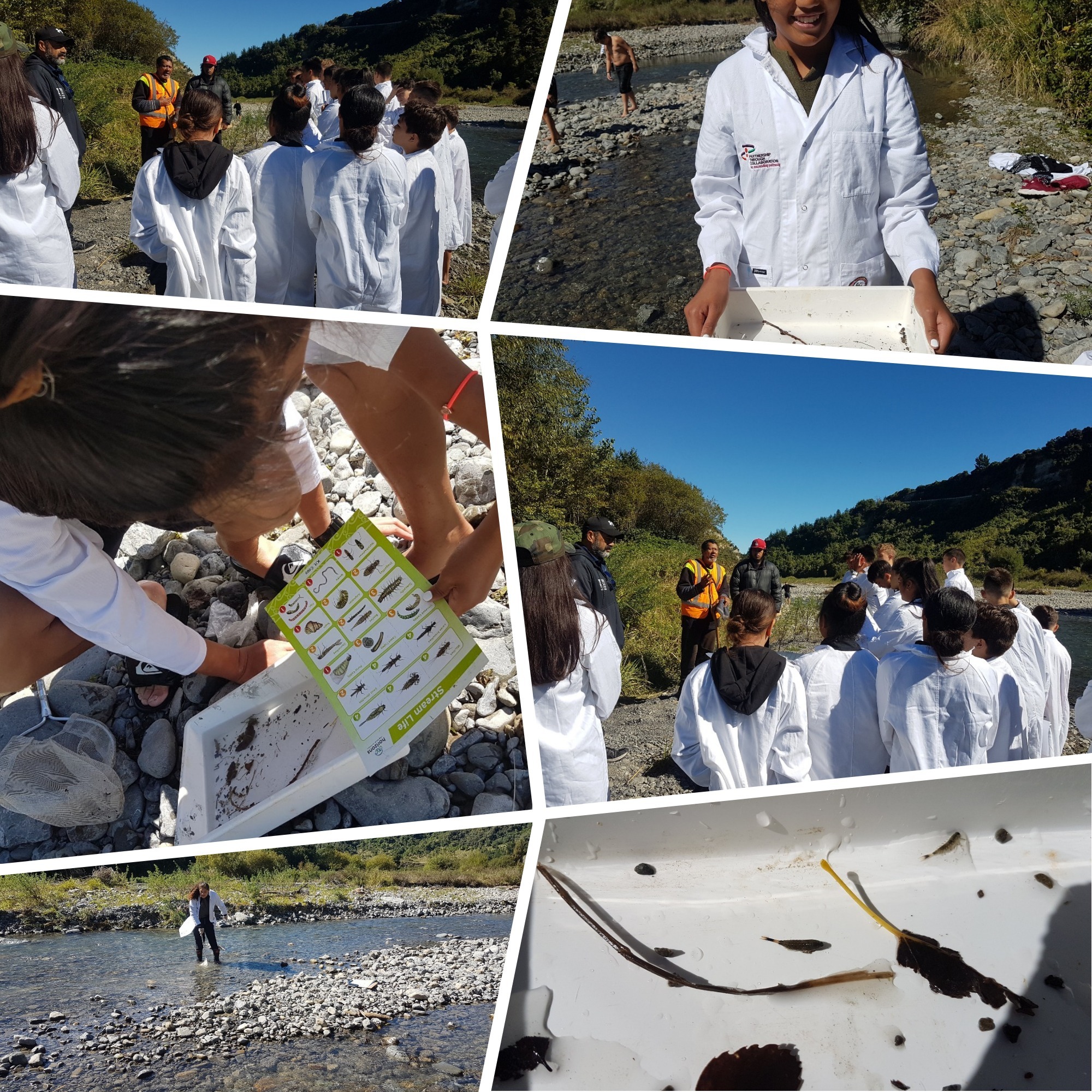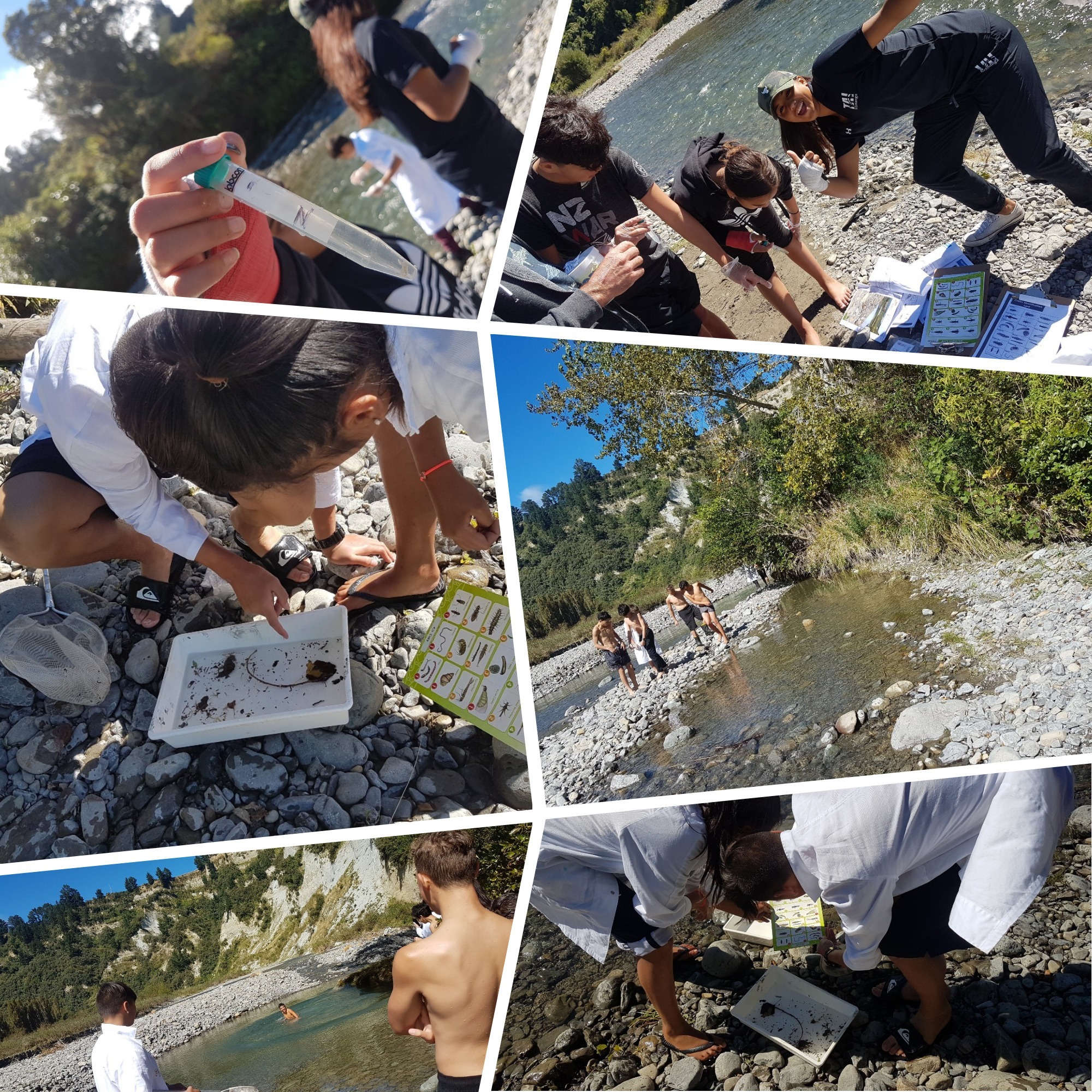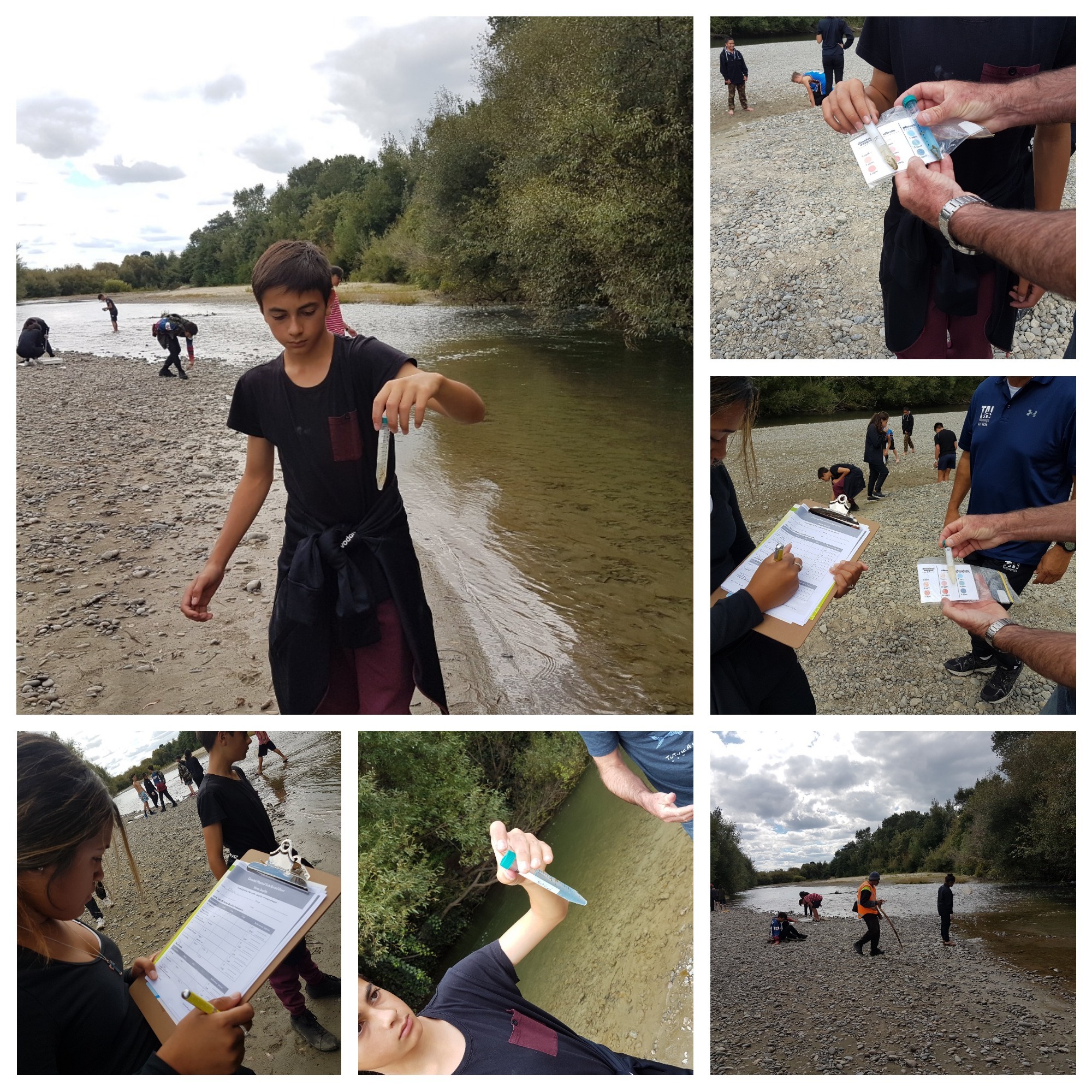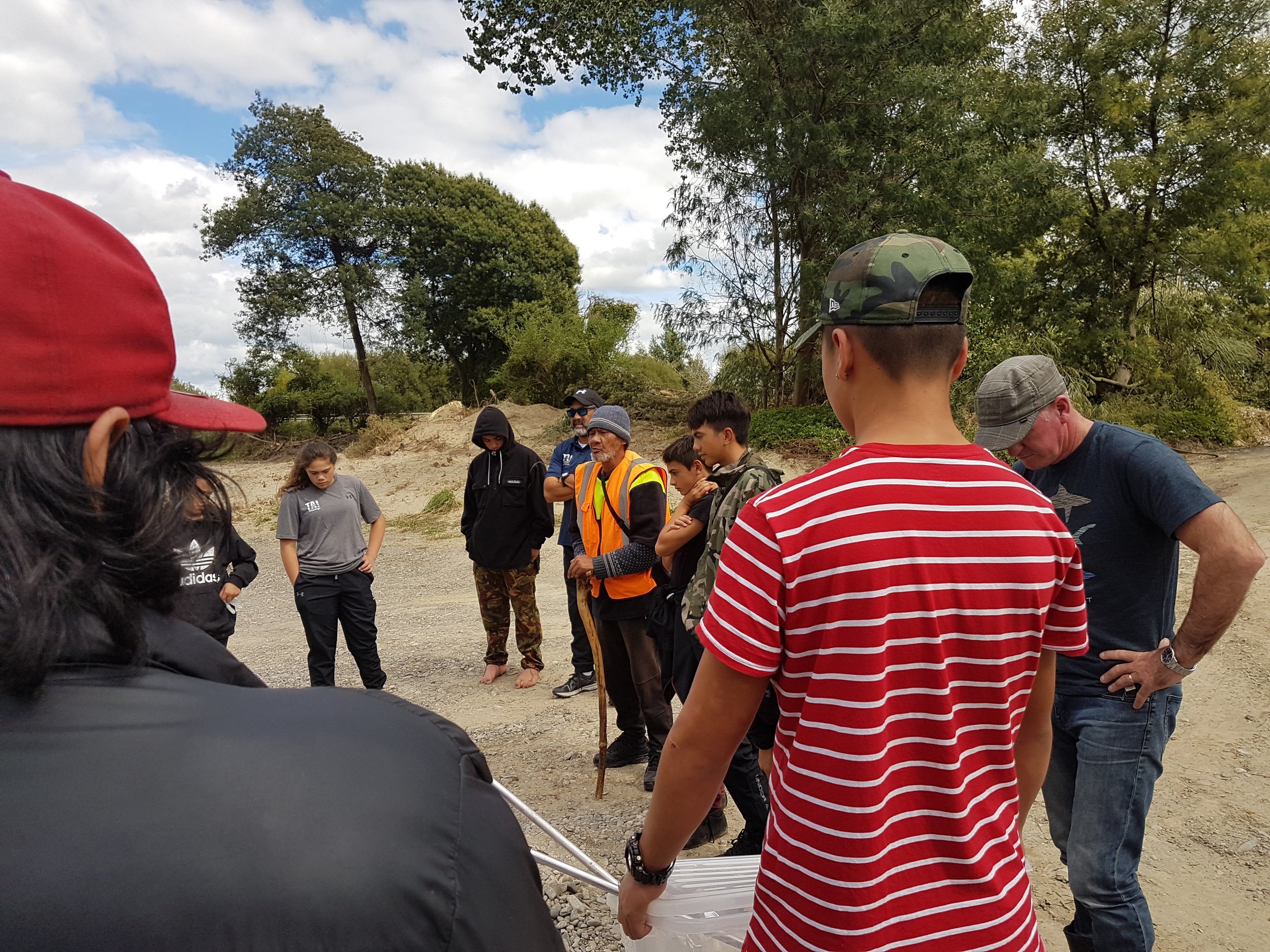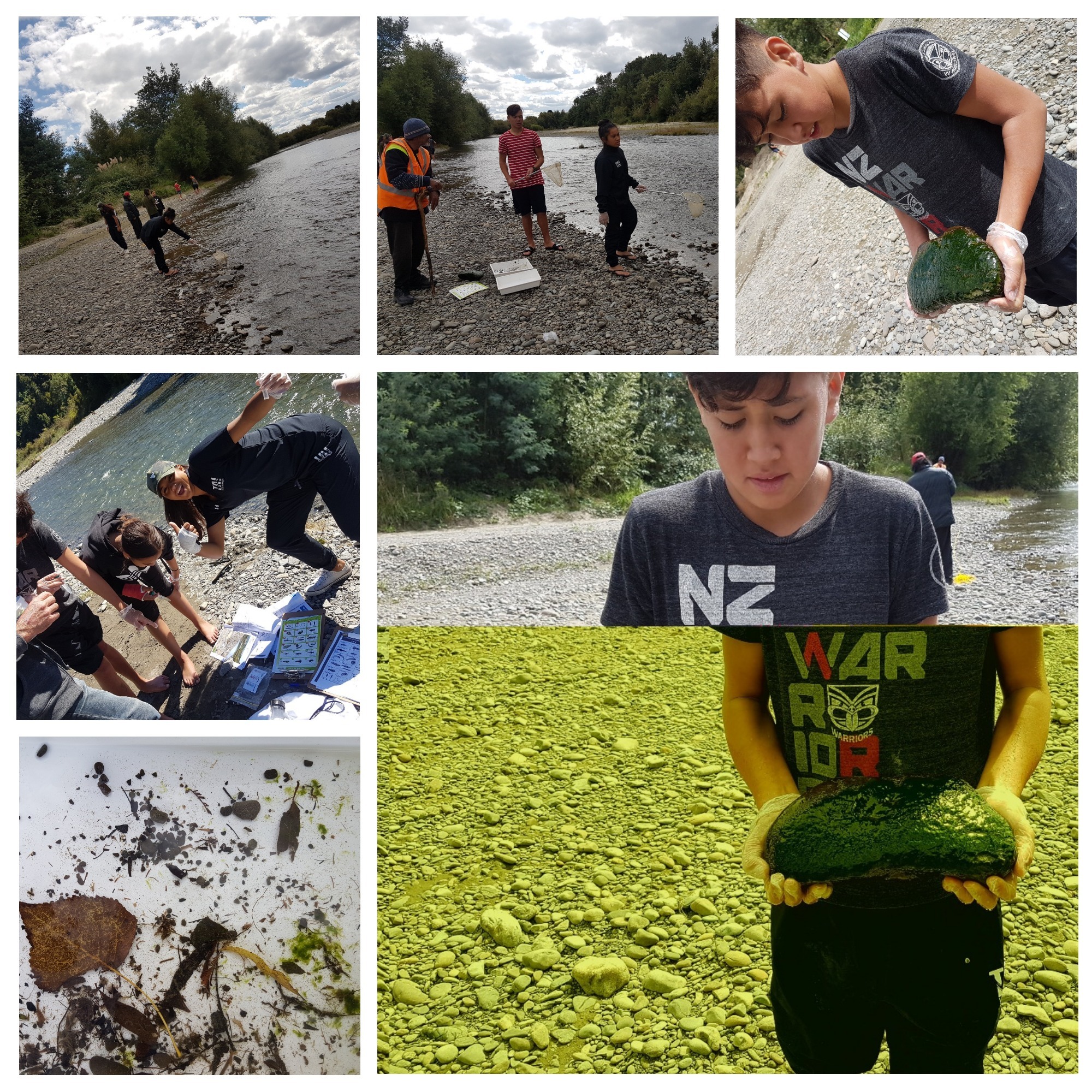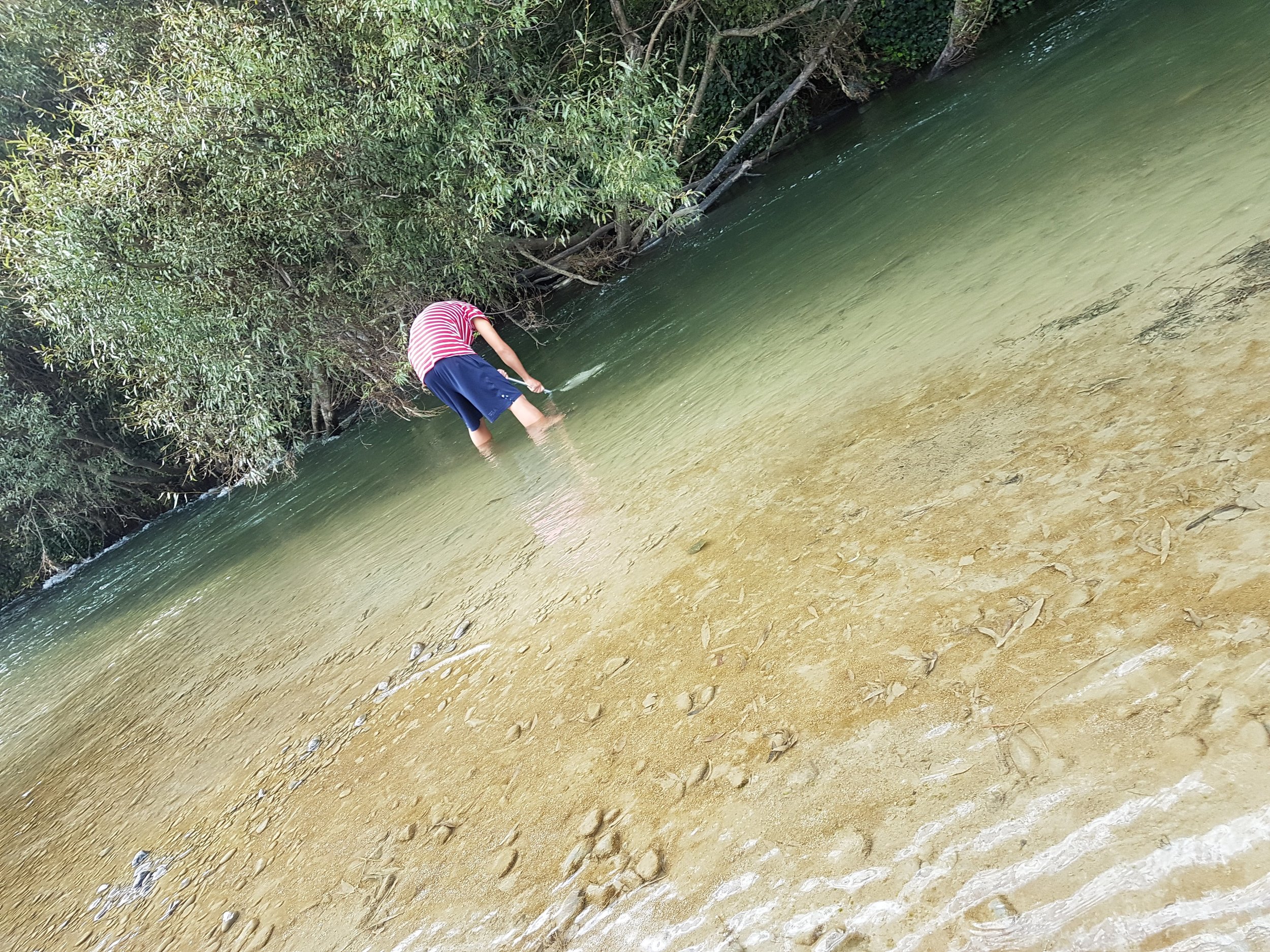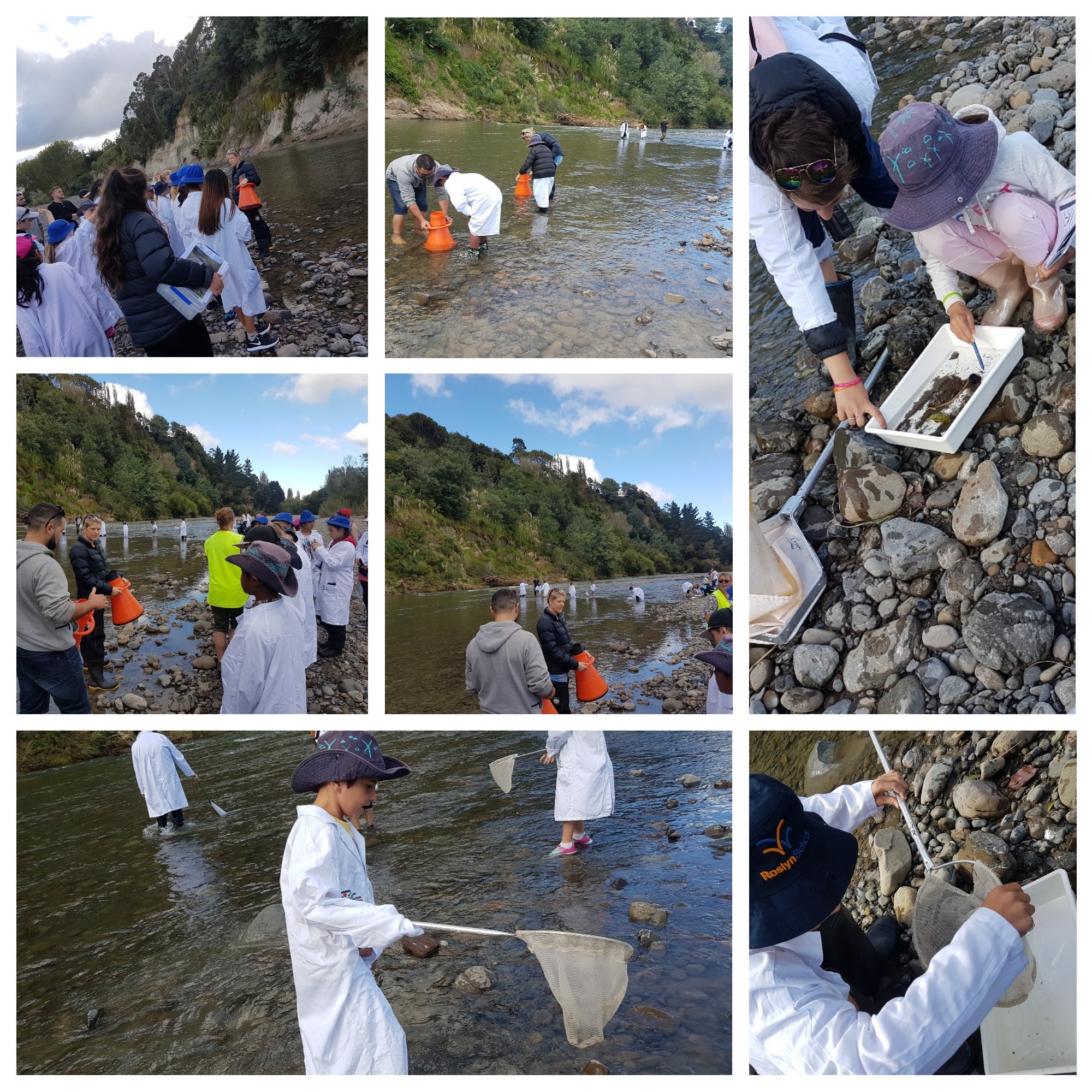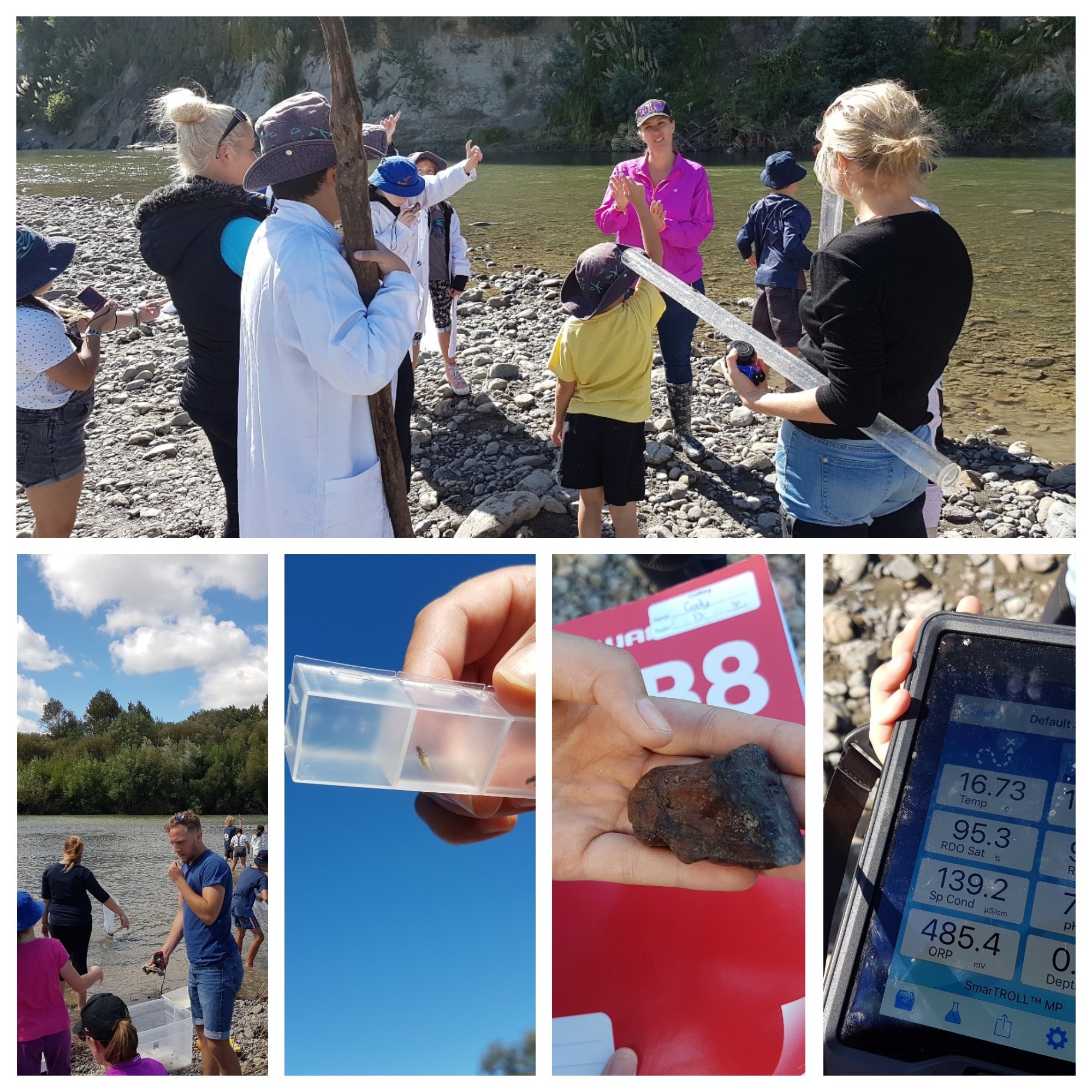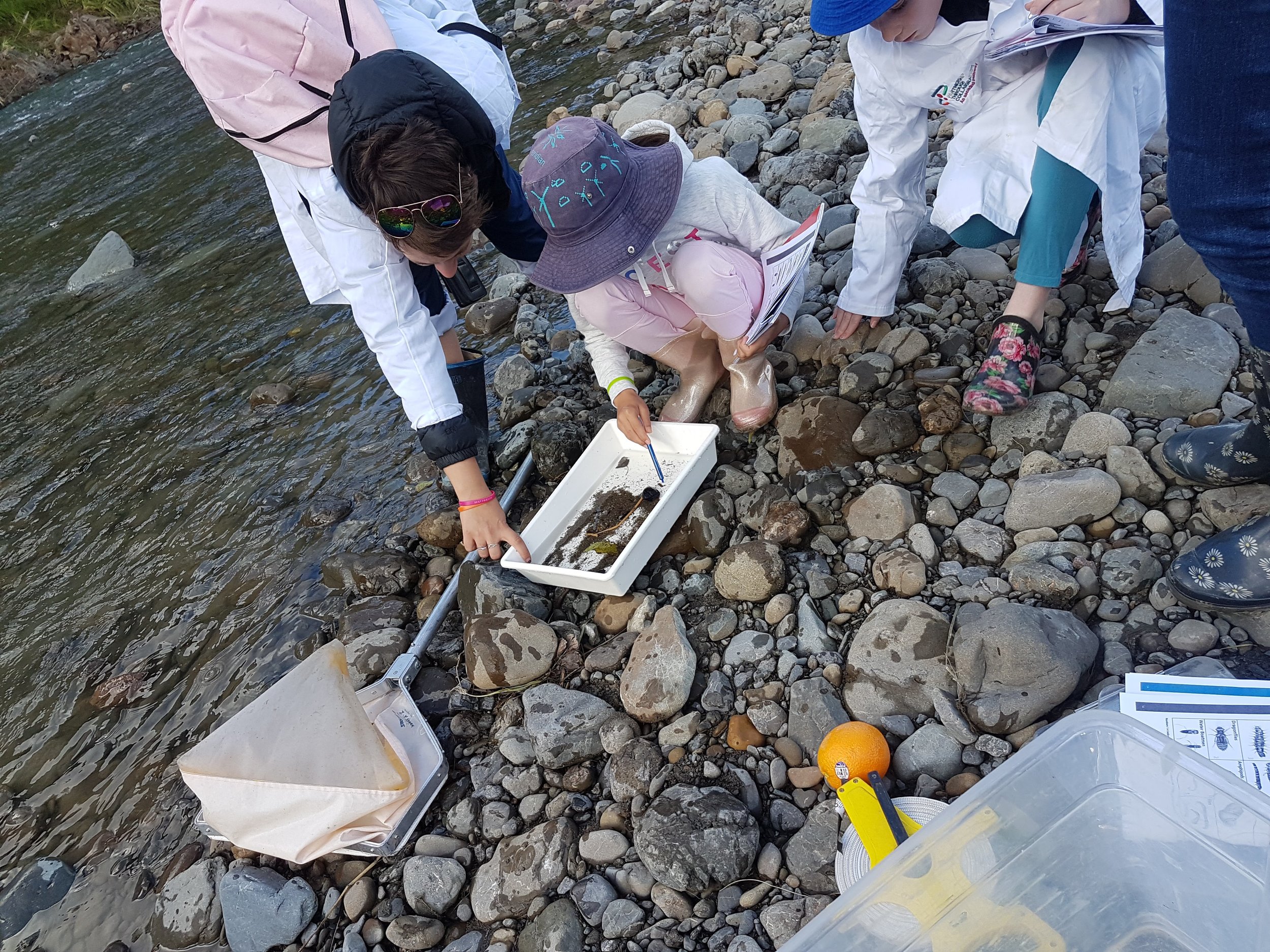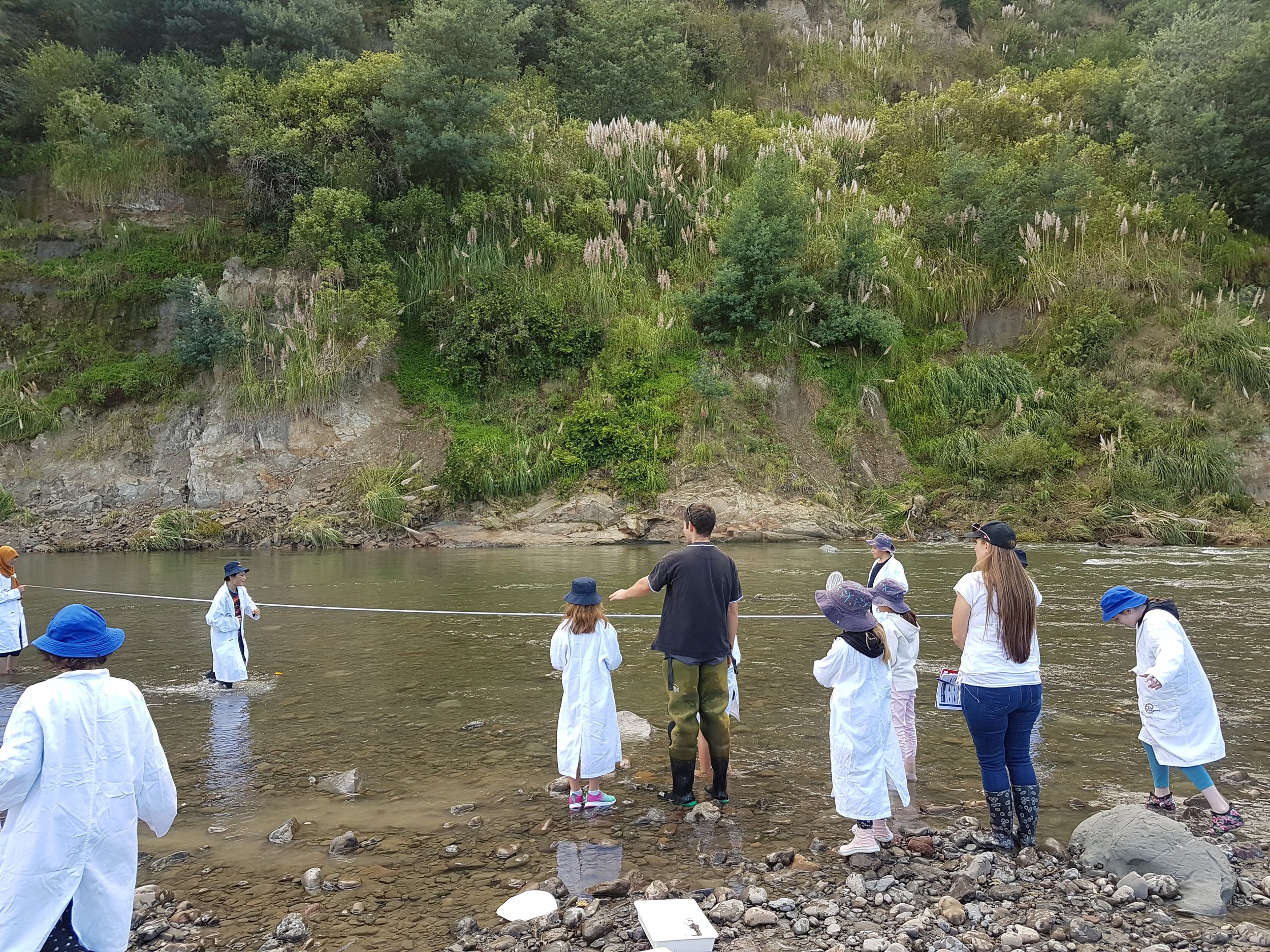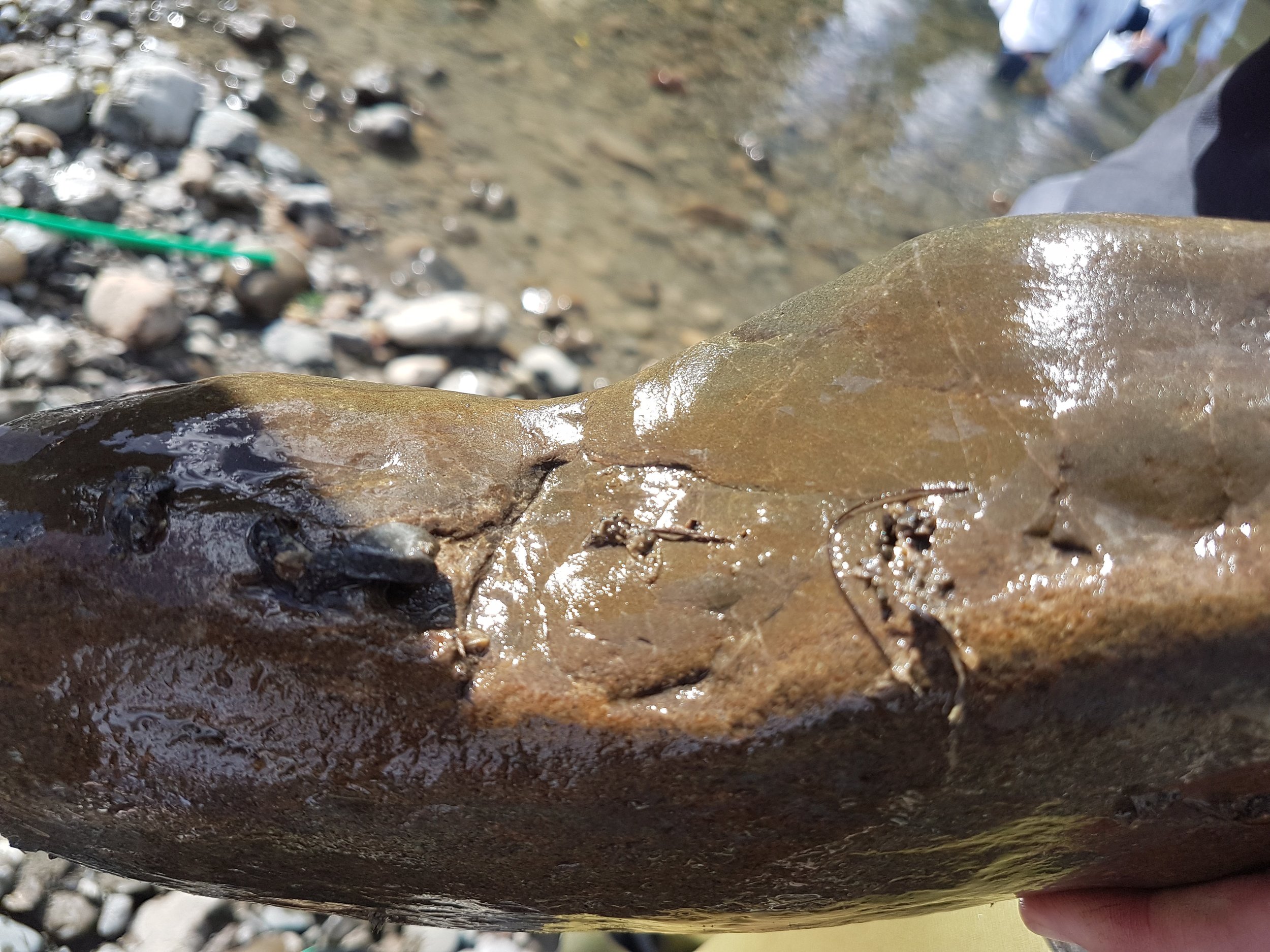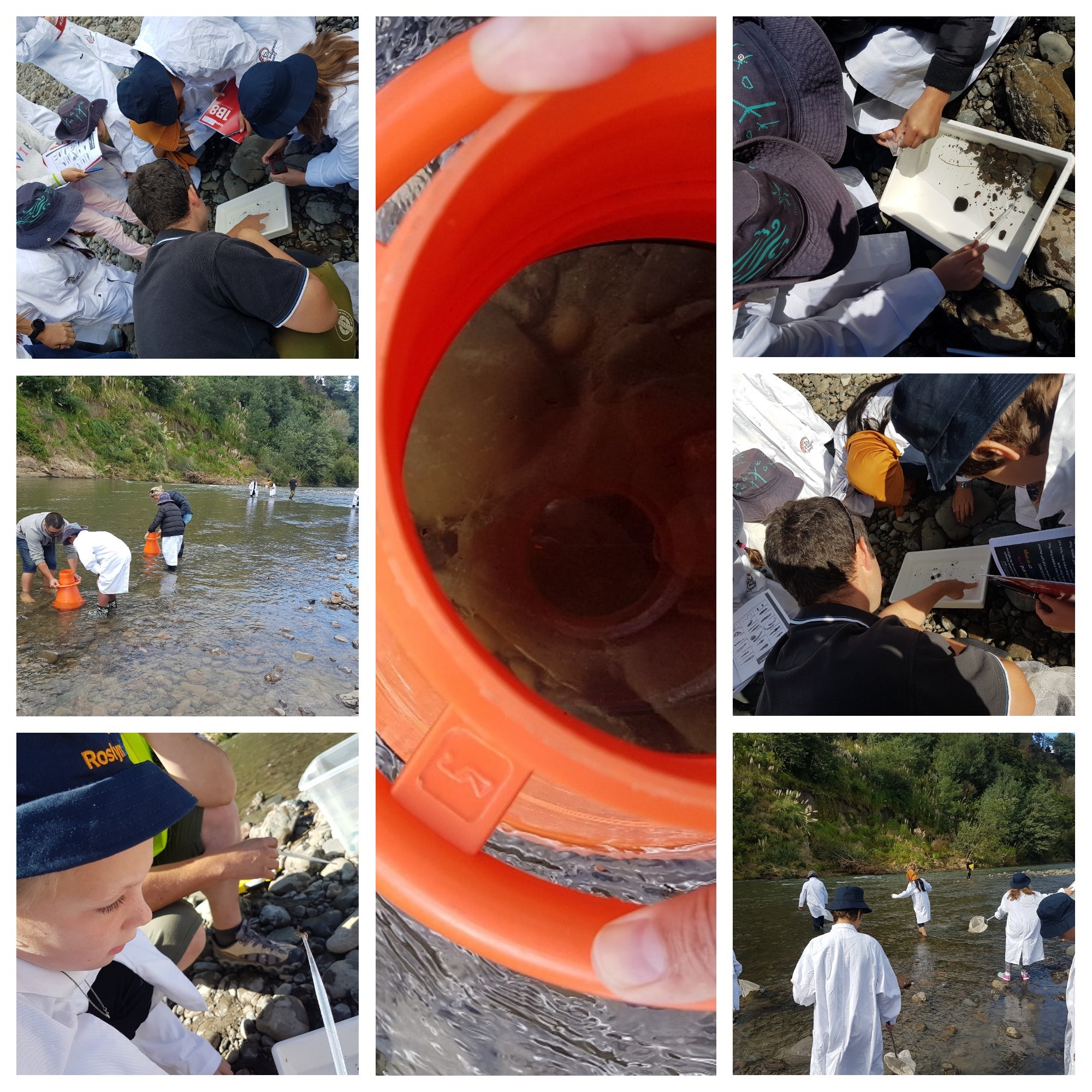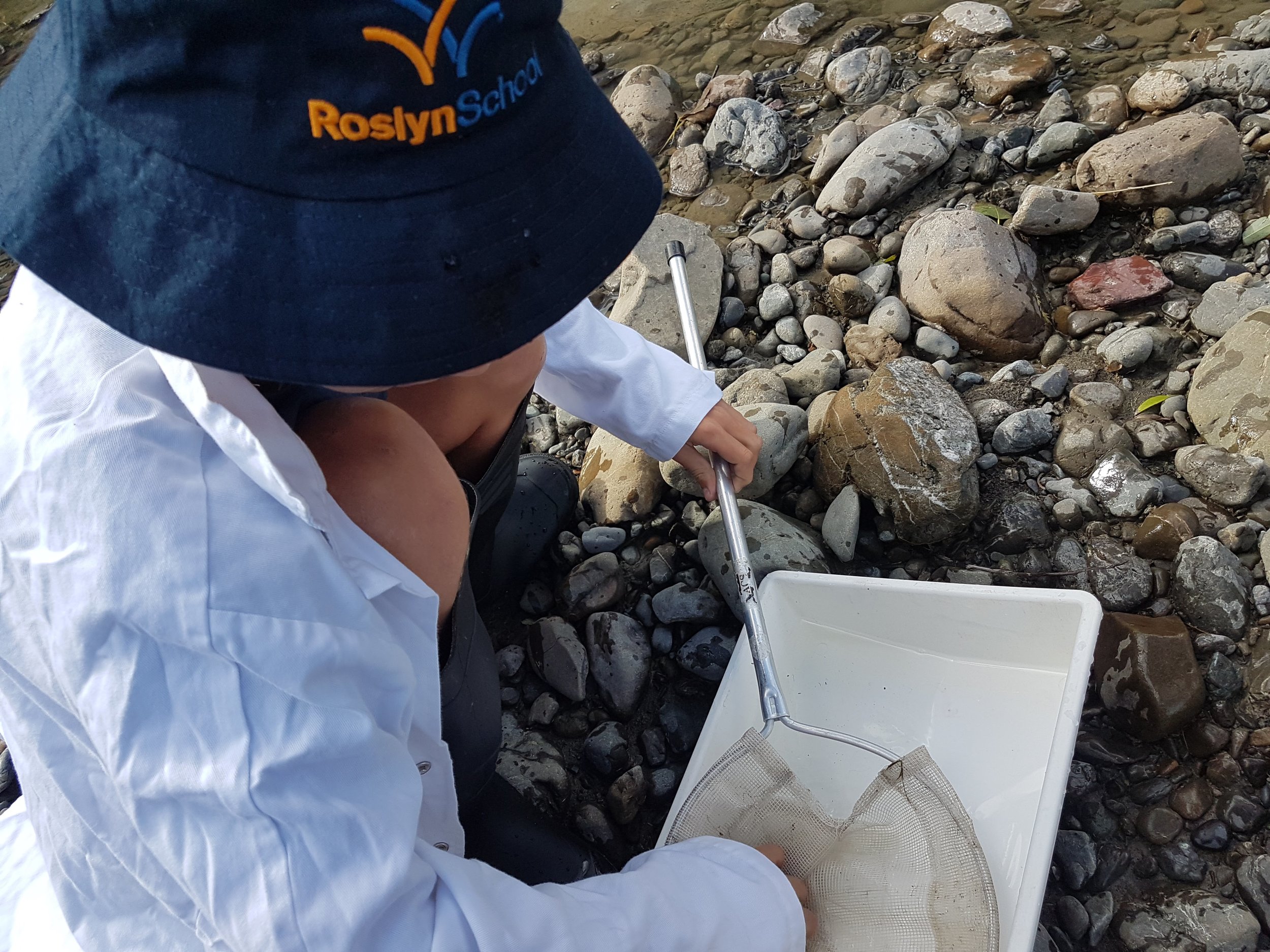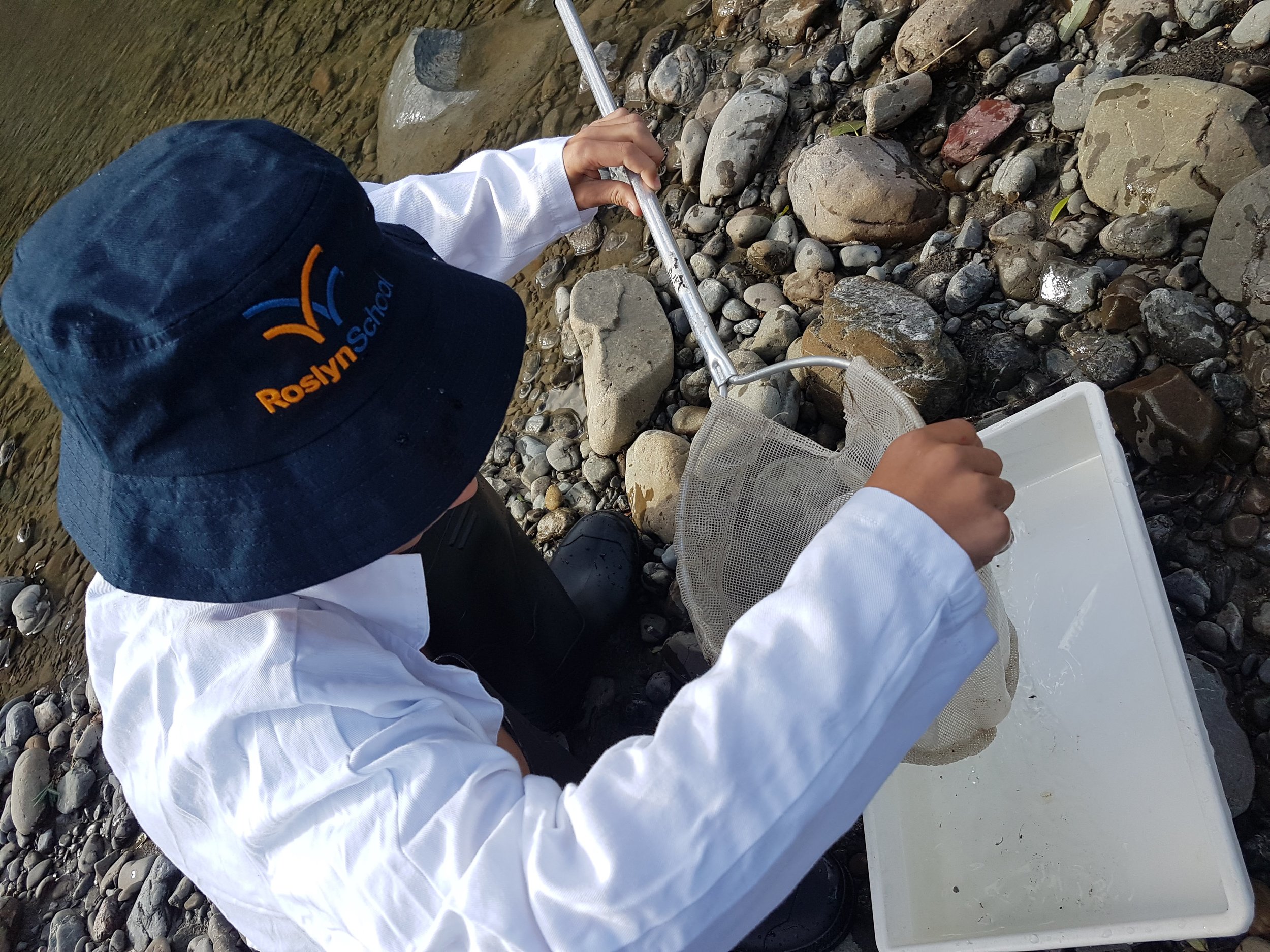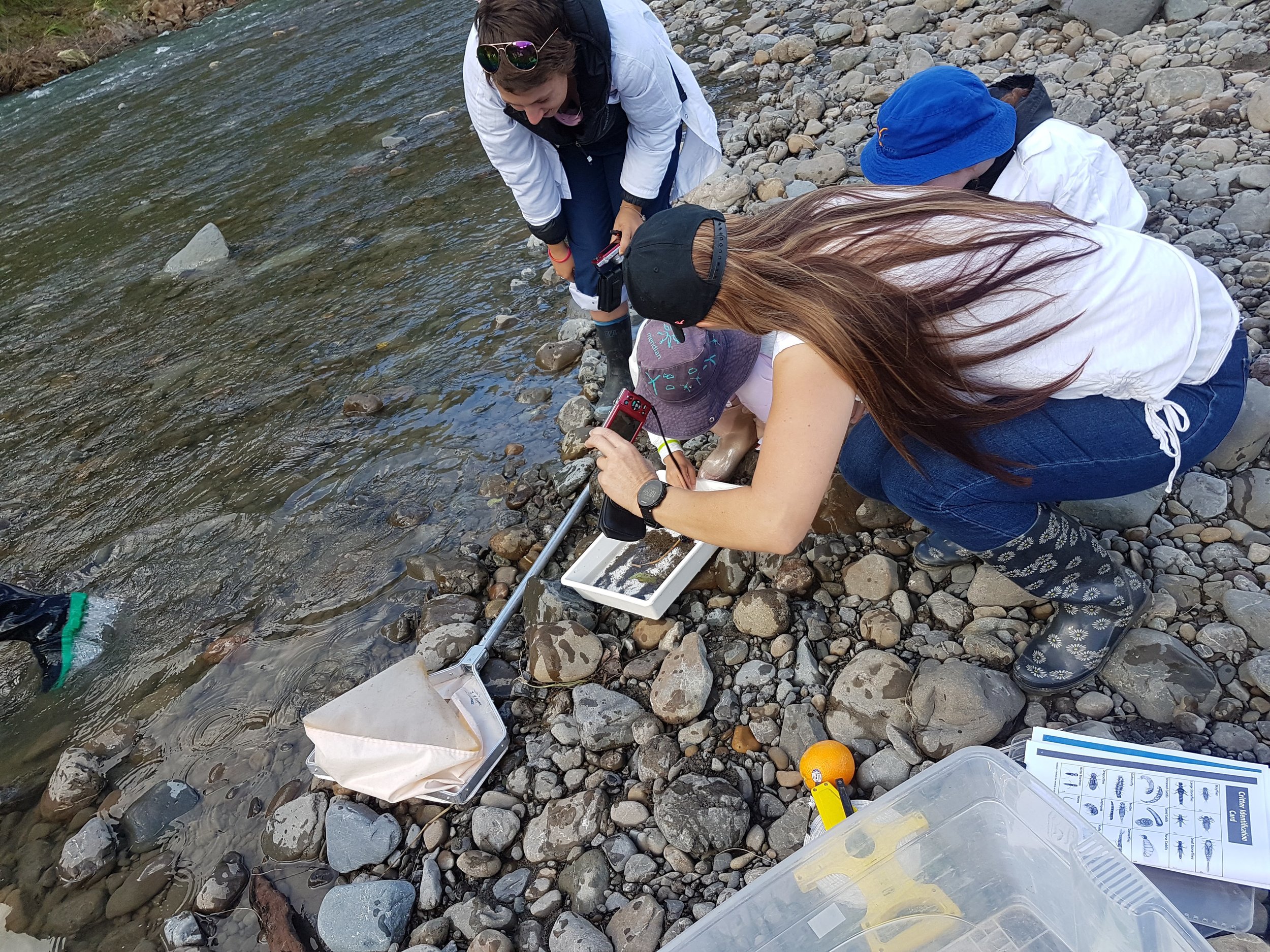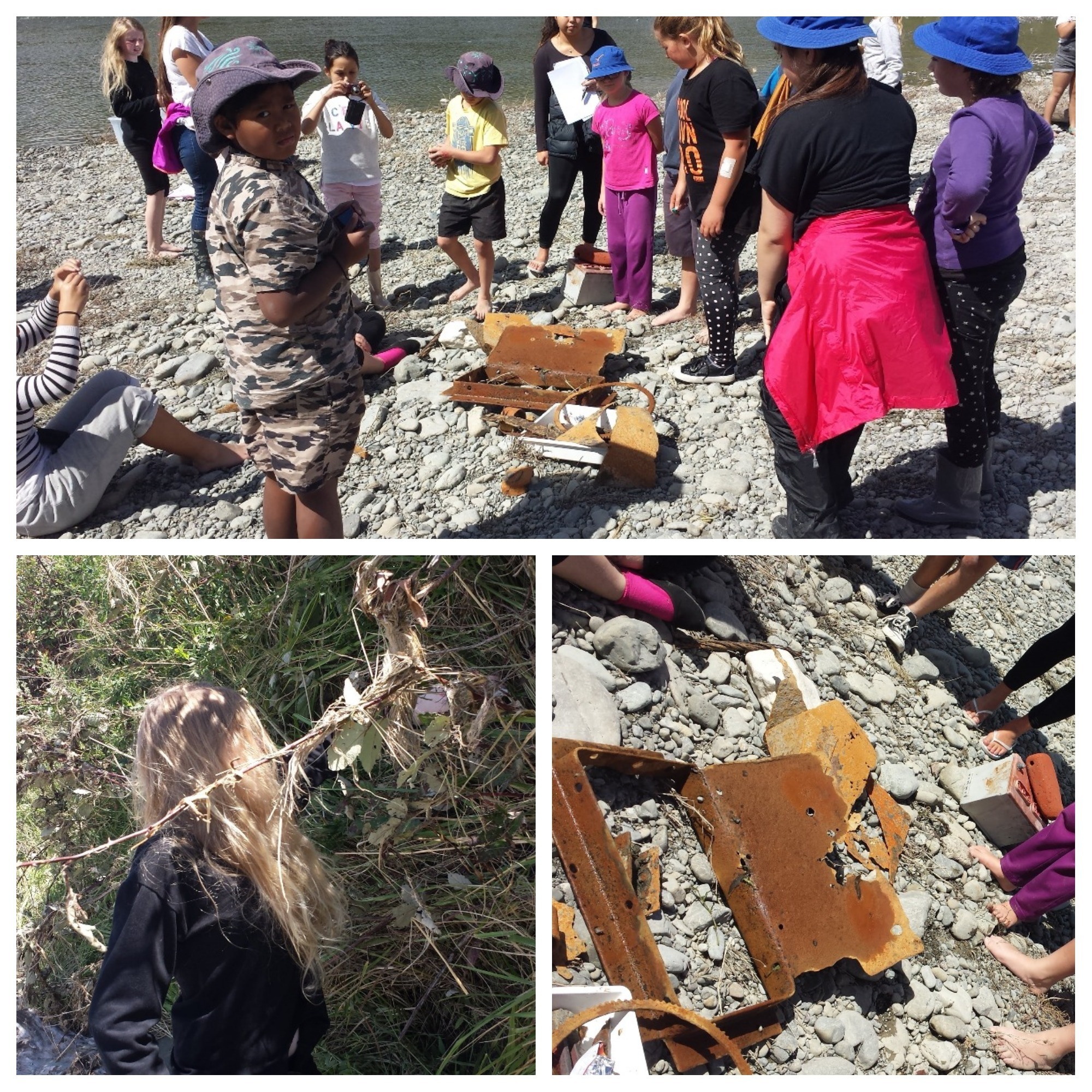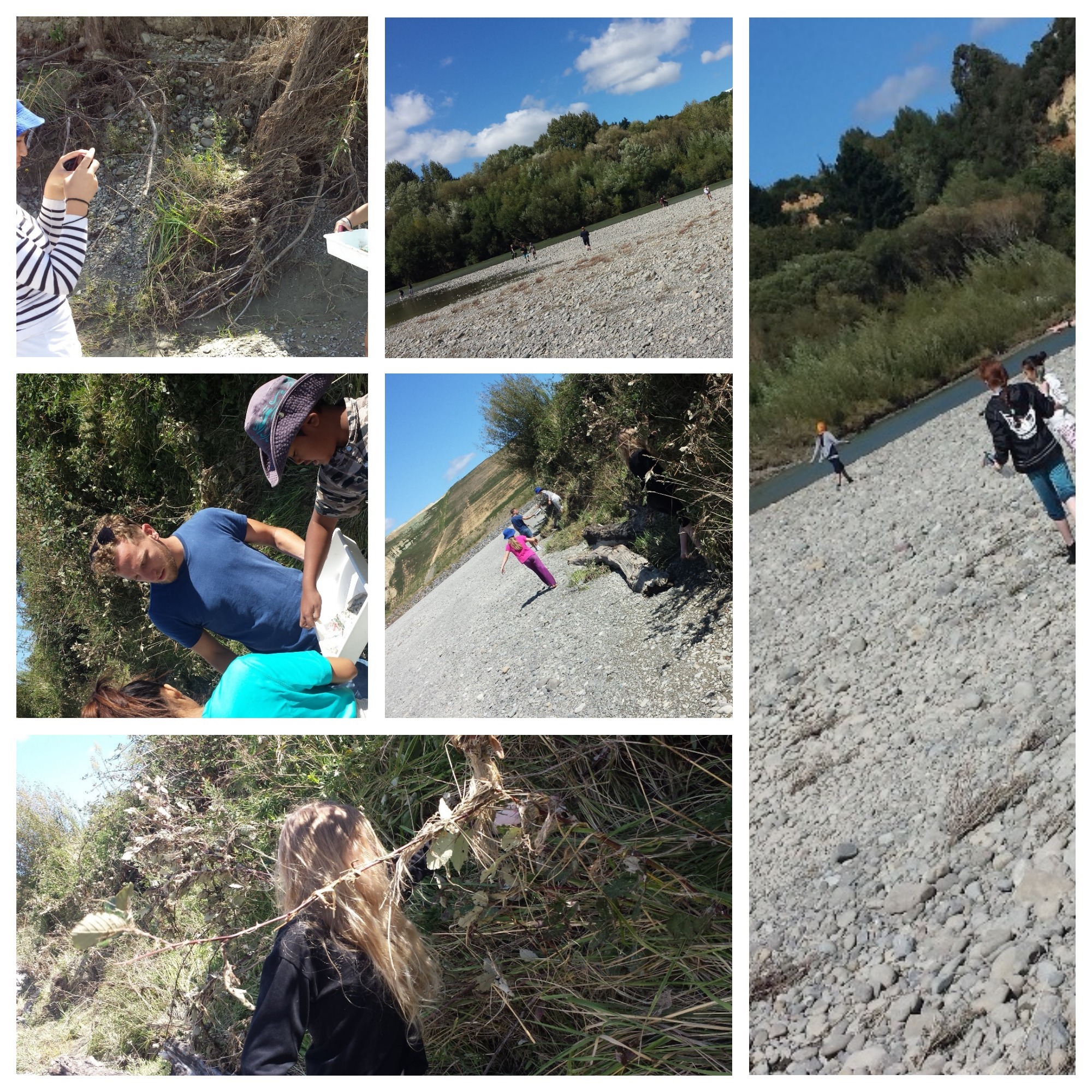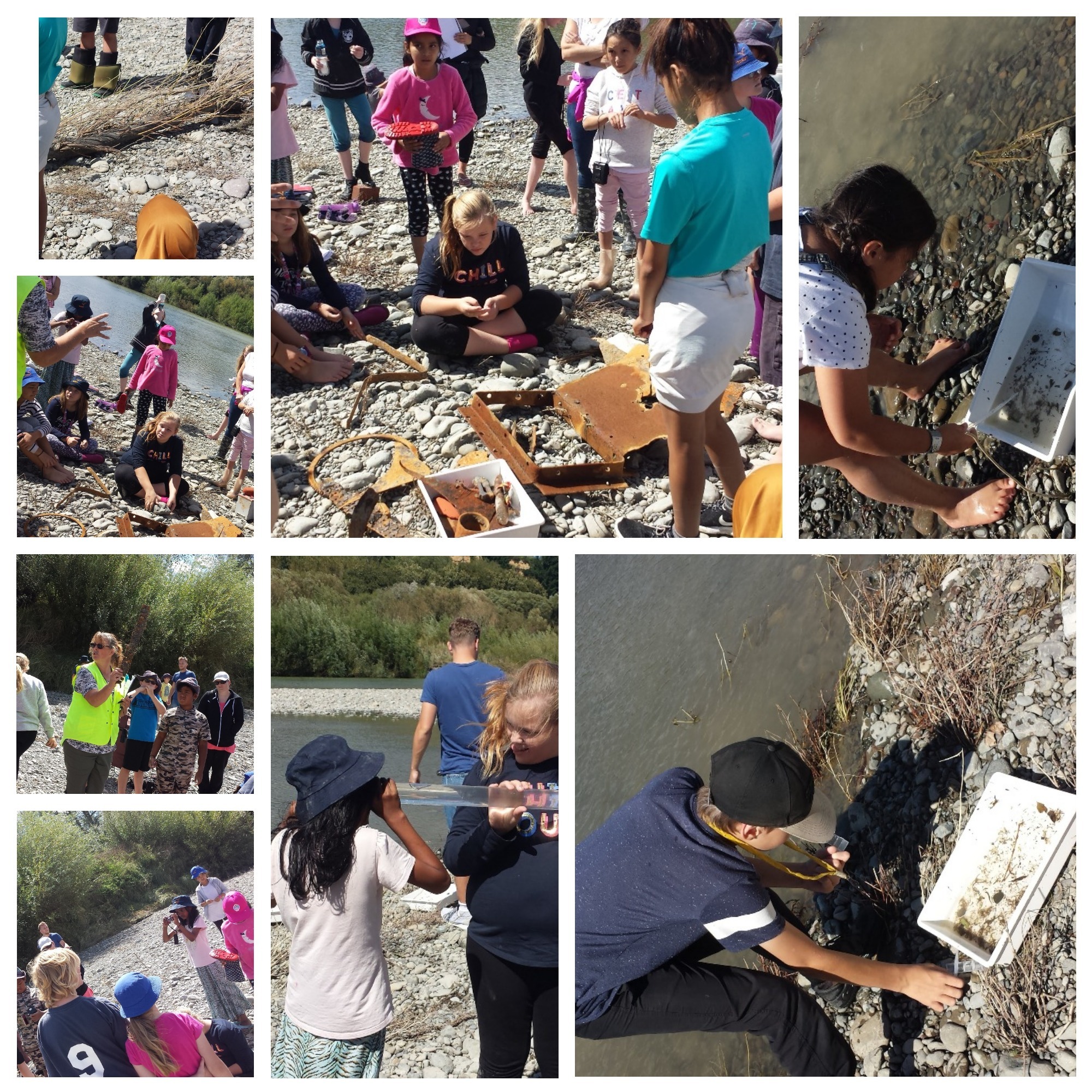River science Manawatu
In the Manawatu, rangatahi focused on a few rivers. Years 9 and 10 students began with a deliberate investigation of changes occurring along our Oroua river. Utilising the Horizons Regional Councils published reports, youth became more informed of those safer areas along the Oroua designed for swimming:
If green then safe for swimming;
If red then its unsafe as musty smelling, black slimy mat-like growths could be observed on river bed stones during low river flows or that;
Levels of cyanobacteria are present especially if you see a light green coloured scum forming on the lake.
Horizons Regional council report
As rangatahi targeted their study at Apiti and Awahuri; they observed some of the soil conservation work in the Oroua catchment designed to reduce sediment from erosion-prone land entering the river. They also noted some significant differences in smell and appearance to Oroua river at Apiti and Awahuri with Apiti more pristine than Awahuri.
Dr Valois -NIWA's Freshwater Ecologist, conducted a pre-training workshop in which she shared to the group, her extensive expertise of freshwater conditions across NZ. By the time the field day approached, students were ready, prepared and challenged to seize the opportunity to make their contribution to society.
Jeff Rakatau, Kaumatua of Nga Kaitiaki O Ngati Kauwhata Inc led the group to Oroua river, utilising the time to describe Mātauranga māori and how iwi and Horizons are working together to improve water quality.
These include:
Helping to fence off rivers and streams so stock do not get into the water and contaminate it
Helping rural land users to stop soil eroding from hills and into water
Ensuring waste that has to go into the water is properly treated to meet water quality standards
Monitoring water that is taken out of the river so there is enough for everyone, including the fish
Rangatahi tested both rivers for physical, chemical and microbial content. Together these results provided indicators of the water quality. Interestingly, this group were also able to compare results from last year's class and it was exciting seeing some of the changes in recorded scores.
Years 7 and 8 rangatahi also did similar investigations of Pohangina river at Raumai and Manawatu river at Albert street; making useful comparisons between the two rivers.
Regional council scientists Mike Patterson and Lizzie Daly provided insights and highlights to the state of these rivers and the monitoring currently being conducted on them. Youths learnt to use a bathyscope -a simple but effective device that eliminates water surface reflection to allow underwater viewing as far as water clarity and light permits. Students were able to view algae under the water through the bathyscope as the clear acrylic lens breaks through the water surface reflection, whilst the light-blocking cone, with soft rubber face piece, eliminates reflection on the lens to provide clear viewing.
An independent report, commissioned jointly by the Ministry for the Environment and Horizons Regional Council and conducted by LWP Ltd and reviewed by NIWA and StatsNZ, has shown that water quality for sediment and E. coli for our region have improved over the past 7-10 years. Key results are:
'The spatial patterns in swimming grades defined by the national and regional swimming maps were reasonably consistent. The national map indicated that 45% of the region’s large rivers (i.e., river segments or order 4 and greater) are swimmable (grade ‘fair’ or better). The regional swimming map indicated that 38% of large rivers are swimmable.
The proportion of 10-year trends at SoE sites that were at least as likely as not to be improving were 65%, 81% and 80% for median E. coli, G260 and G540 respectively. For the seven-year time-period, the proportion of trends at SoE sites that were at least as likely as not to be improving were 72%, 91%, 81%, 78%, 99% and 95% for median E. coli, G260, G540, clarity, SSC and turbidity respectively. Thus, the trend analyses provide strong statistical evidence of regional improvement in the water quality measures over the past decade' (p.9)
The groups also used the opportunity to collect rubbish dumped on the beach. They were able to compare the different types of rubbish and proposed recommendations for their disposal.



